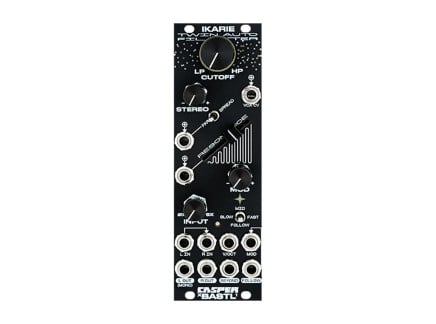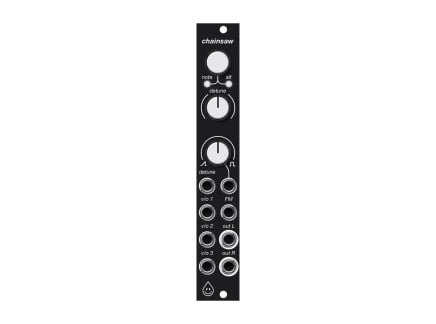The filter is the core of the sonic character for many synthesizers—a single section which can impart drastic changes to the instrument's overall timbre. Many instruments are prized for the sound of their filters alone, and when building a modular system, choosing the right filter is an important step for many musicians.
If you're curious about how filters work, or some background about the many types of filters out there, we recommend checking out our in-depth article, Learning Synthesis: Filters—you'll find that there is a huge number of ways filters can be used. But today, we're honing in on a specific aspect of working with filters: the filter sweep. It's a basic idea, and once you've wrapped your head around a few different ways to approach it, you'll find a world of new sonic techniques under your tool belt. And even if you're already a synthesis pro, keep reading—you never know how another perspective might affect the way that you see things and the way that you make music.
What is a Filter Sweep, and Why Would I Do It?
As we know, a filter is used to remove harmonic content from a sound. Highpass filters, for instance, allow high frequencies to pass beyond a variable cutoff frequency—as you increase the cutoff frequency, the sound passing through begins to lose low end, sounding thinner or airier. Lowpass filters, on the other hand, allow low frequencies to pass beyond the cutoff point, removing high-frequency content; this tends to darken bright sounds, making them seem more round, full, and muted. And of course, a filter's resonance also has a strong effect on its character, emphasizing frequencies near the cutoff frequency. This can cause the filter to sound almost liquid, providing a starkly different character.
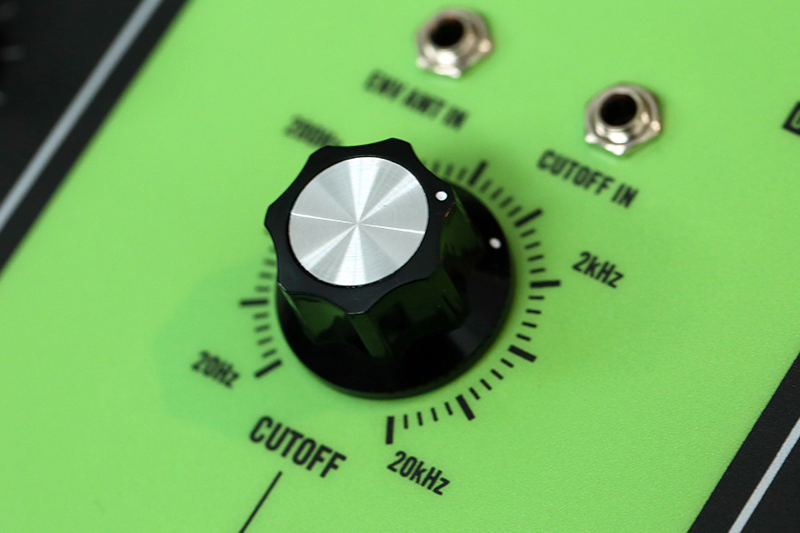
The thing is—in most musical situations, filters aren't used for simple "set and forget" sorts of effects. Leaving a filter set to a specific cutoff frequency can sound unnatural, especially as the sound going into it changes in frequency. As such, changing the filter's cutoff frequency over time is super important for filter-based sound design. This is what we mean when we say "filter sweep": a filter sweep is a technique that relies on using manual control or modulation in order to sweep the cutoff frequency from low to high or high to low values, causing the sound to change in brightness and character over time.
Perhaps the most iconic filter sweep sounds come from sweeping the cutoff frequency of a resonant lowpass filter: this is the technique behind countless incredible synth swells, compelling bass lines, and evolving drones. In fact, this sound can be so evocative that it's actually surprisingly easy for YouTube Content ID algorithms to automatically sweep in claiming that you're infringing on the copyright of Chemical Brothers (check out this hilarious YouTube video by Starsky Carr for context...this has happened to us a ridiculous number of times).
There are a handful of ways you can approach a filter sweep, of course—so let's break down some of our favorite ways of conceptualizing these sounds so that you can get started sweeping at home!
Things to Keep in Mind
In the video above, our Patch Pal Wes goes through great detail explaining some of his favorite ways of conceptualizing/patching filter sweeps using a Bastl Ikarie (an amazing filter) and Acid Rain Technologies Chainsaw (an amazing oscillator), with automated sweep control from a Make Noise Maths (an amazing envelope/LFO/general-purpose control voltage source). But for the sake of thoroughness, let's break it down further.
An important reminder before we go on—envelopes are the most common source of articulation in a synthesizer, allowing us to create triggerable one-shot changes in some aspect of the sound. In keyboard synths, envelopes are often used to create articulations that mimic the types of sounds you get out of acoustic instruments, but especially in modular synths, it can be a blast to experiment with bizarre, unnatural articulations by being very intentional about your envelopes' shapes. Many of the synth sounds we know and love are all about using basic synthesis building blocks to create those uncanny, otherwise impossible sorts of sounds—and while envelopes can control any aspect of a sound, let's turn our focus toward their potential uses controlling a low pass filter's cutoff frequency. That perspective in mind, let's take a look at Wes's favorite types of filter sweeps into four categories...so let's look at each in detail.
Sweep Type 1: The Long Linear Attack
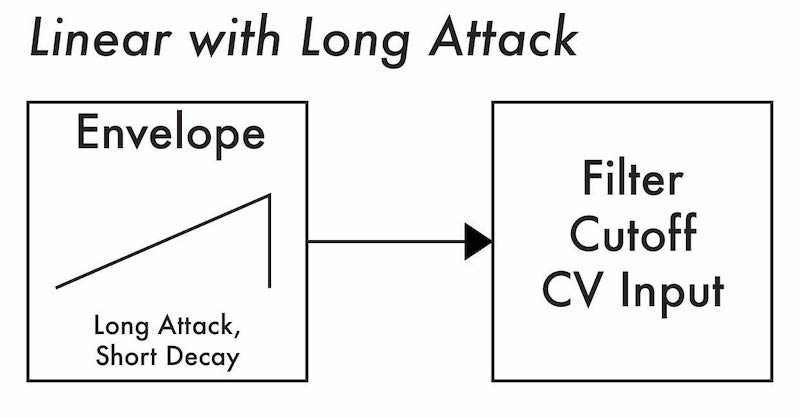
This technique is a classic way to create evolving swells that really create a sense of forward momentum in your music. This is a great example of an unnatural envelope shape: a long swell with a very sudden dropoff at the end. Just set your envelope to a linear shape, set the attack time to be fairly long, and the decay time to be very fast. When triggered, it will create a long swell that ends very abruptly.
Especially when you're planning your envelope timing very precisely, this can be super effective for making a rhythm feel as if it's gaining momentum as it progresses. It's very alien, and somehow scratches an itch in a primitive part of your brain—and I love it. Try experimenting with different modulation depths and different oscillator shapes going into the filter and you'll find a wide range of useful, tension-building timbres.
Sweep Type 2: Linear with a Short Attack
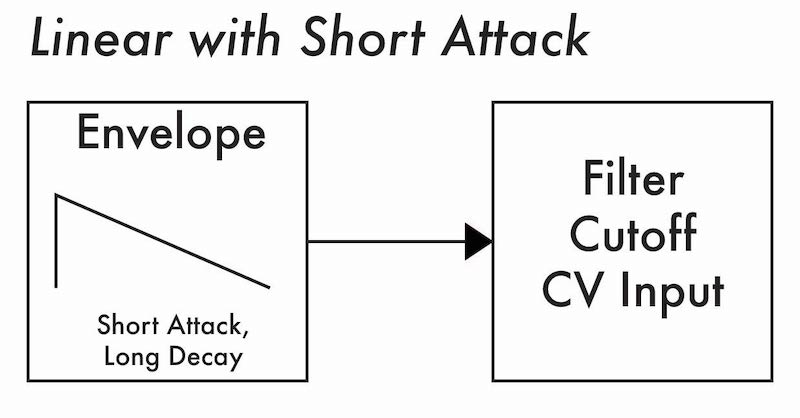
This shape is great for classic synth articulations, offering a particularly round, bouncy sound great for more intricate rhythmic work. Where the long linear attack envelope described before really hinges on having fairly long envelopes for good effect, this one works quite well with shorter durations and can be used to create a clear articulation at the beginning of each note. Just set your attack time to be very short; experiment with different decay lengths to taste.
As before, this type of sweep benefits from experimenting with different settings. Given the fact that this uses the envelope to create a defined attack/transient at the beginning of the note, adjusting your modulation depth to taste is quite important: at high depths, you'll get much brighter, brassier articulations, but at lower depths, you'll get those classic round, bouncy bass tones we know and love. And of course, different oscillator shapes will create very different effects as well!
It's also worth trying this technique with exponential decay shapes as well: this will create a much pluckier response, almost like smacking a drum or plucking a string, where the first instant of sound is quite bright, while the decay tail is much darker. This is an excellent way to do easy-yet-intentional transient shaping in a modular system, so definitely give it a shot! You'll find that carefully controlling your decay shape and length can give you surprisingly effective emulations of traditional instrument envelope profiles with a distinct electronic twist.
Sweep Type 3: Exponential with a Long Attack (the Reverse Sweep)
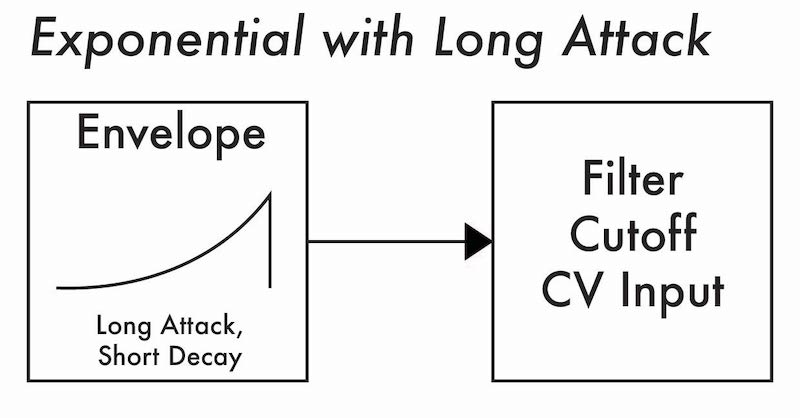
This is a personal favorite, for exactly the reasons Wes notes: this is an excellent way to create a fake tape reverse/time warp effect. Simply set your envelope attack shape to be exponential, use a relatively long attack, and set the decay to be immediate. The difference between this and the Long Linear Attack described above is what happens in the last moment of the envelope's duration. Much like using an exponential envelope with short attack, this yields a brief moment with much more harmonic content than the rest of the sound.
Ultimately, the effect is a long swell that very suddenly whips into a state of higher-frequency energy and ends abruptly. This is, again, a very unnatural sound—but unlike the continuous increase in energy from the long linear sweep, this has a very quick change in energy toward the end of a sound. With some delay and reverb, this can be a great way to make sci-fi time reversal textures—or in a simpler setting, you can use it to simulate reverse snares, cymbals, etc. to create quick anticipation and reinforcement of strong beats in your music. I personally use this type of shape a lot in improvisational settings with other musicians: it gives them a strong sense of direction and articulation that is quite fun to react to in real time.
Sweep Type 4: The Wobble
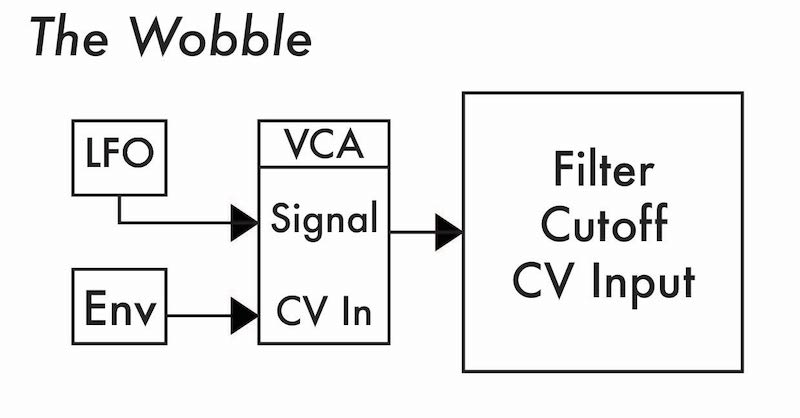
This one is a bit more complex, making use of an envelope, LFO, and VCA for control of the filter's cutoff frequency. The basic setup involves sending an LFO's sine wave output into the VCA's signal input and our envelope to the VCA's control voltage input—basically, this makes it such that the envelope controls the LFO's overall amplitude (its "depth" or "intensity").
Then, route the VCA's output to the filter's cutoff CV input. The effect should be a wobble that happens with a speed determined by the LFO, but a varying LFO depth determined by the shape/speed of the envelope. This should be evocative of dubstep or UK garage, and with the right amount of subtlety can create intense, brooding, continuously evolving drones.
Of course, given the larger number of parameters for this type of filter sweep, there's a lot more you can play with. Try pairing faster LFO rates with longer envelope swells, or using similar LFO and envelope rates to create weird, shape-shifting, off-kilter wobbles. Try adjusting the VCA's output range (using an attenuator on the filter, or by imparting less modulation from the envelope to the VCA itself)—you'll find that you can achieve everything from muted, subtle sweeps to blasts of intense modulation rhythms.
You Don't Need a Broom
Are the only ways you can sweep a filter? Heck no! As with anything synth or music-related, these ideas are just points of departure for you to think about when doing your own sonic exploration. There aren't any rules, and we're constantly learning new ways to think about even the simplest of musical ideas or synthesis techniques. And that's the fun of revisiting even ideas that seem quite familiar—perhaps with the right tweak of perspective, you'll find something you hadn't considered, or something you'd completely overlooked.

